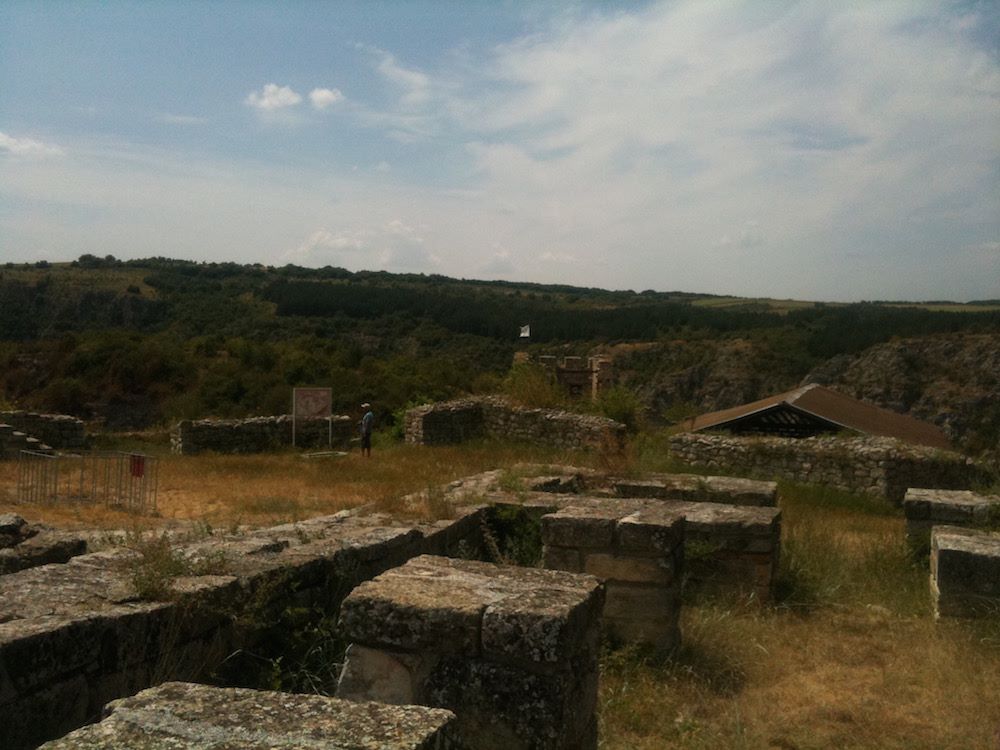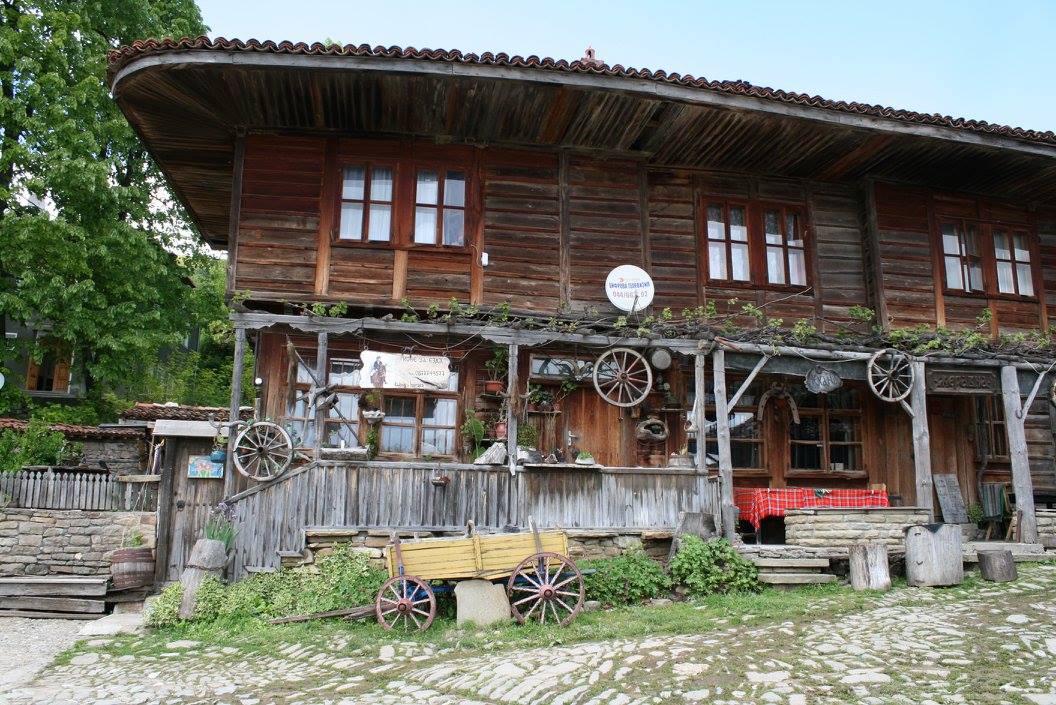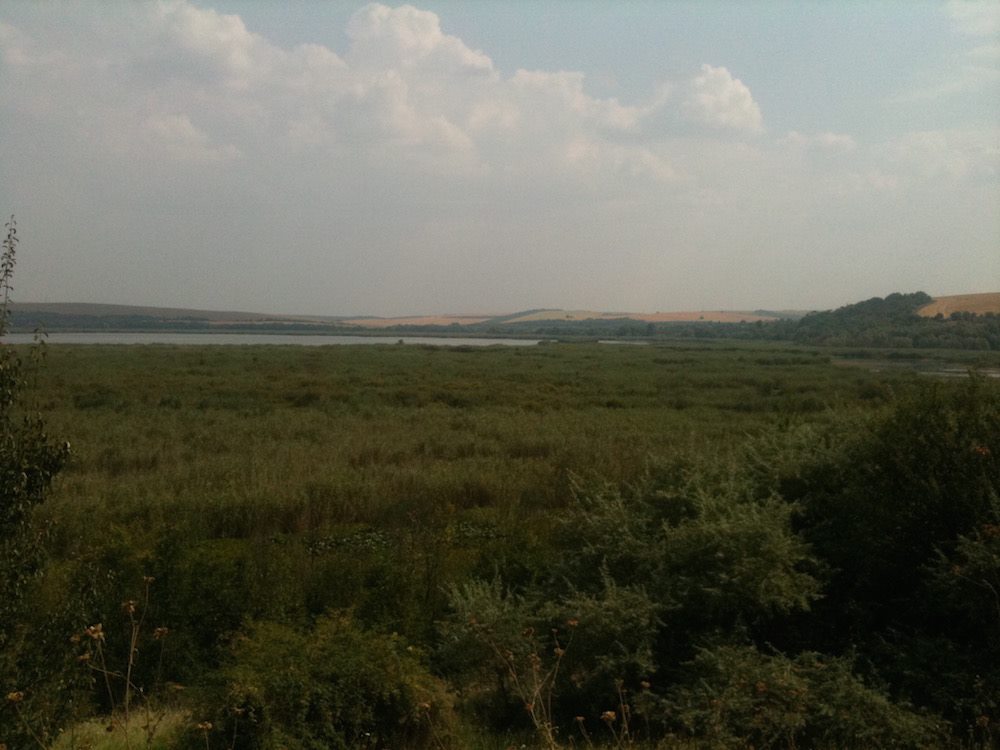I had been saying for ages I would take Pete to visit Perperikon and so back in July we organised a trip to take in the sights around the Kardzhali region, including Perperikon.
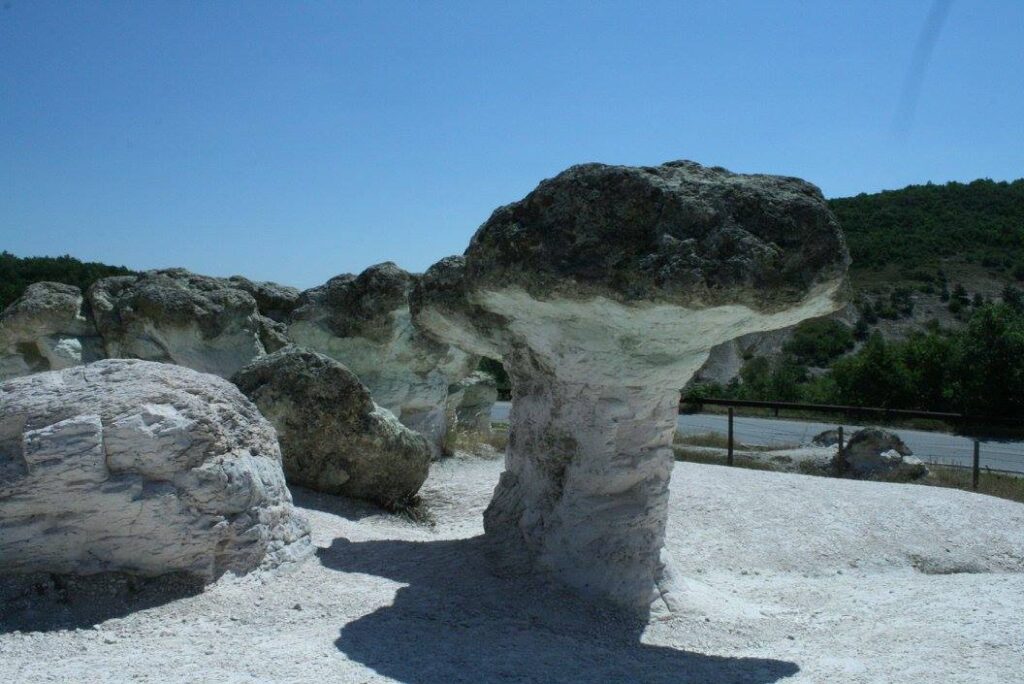
Its about a a 2 hour trip from our village and the road leads past the Stone Mushrooms just after the village of Beli Plast.
Just on the edge of the road and easy to miss if you are not looking out for them, the Stone Mushrooms stand around two and half metres tall and are the result of underwater volcanic activity and then subsequent erosion from the weather, once exposed.
These rock formations sit on an old lake bed and cover around 3 acres, but the main formations are right on the edge of a road and its a good, quick stop off on the way to Perperikon.
You only need a few minutes to walk around and take a few pictures. There is no entry fee and parking (limited) is just on the edge of the road.
Its only around 20 minutes from Beli Plast to Perperikon and its fairly well sign posted. I first visited the archaeological site back in 2005. Then, there was no proper car park and just a rough track up to the top of the hill and no charge for admission.
I went again in 2008 and there was a little more commercialisation with a few stalls at the bottom of the hill. Now there is a newly tarmac’ed car park (with a couple of levs parking fee) and a few stalls selling various trinkets and fossils which are nothing to do with Perperikon!
A path then takes you past a small port-a-cabin where there is someone taking 6 levs per person fee and you can hire a guide and buy various maps of the ruins.
There is then a lovely new path up to the main entrance (“the temple road”), where the massive stone carved steps cut through the rock and take you to the pinnacle of the hill, where the main ruins are.
It used to be a steep scramble up a rough track but the going is now much easier, making Perperikon much more accessible to many.
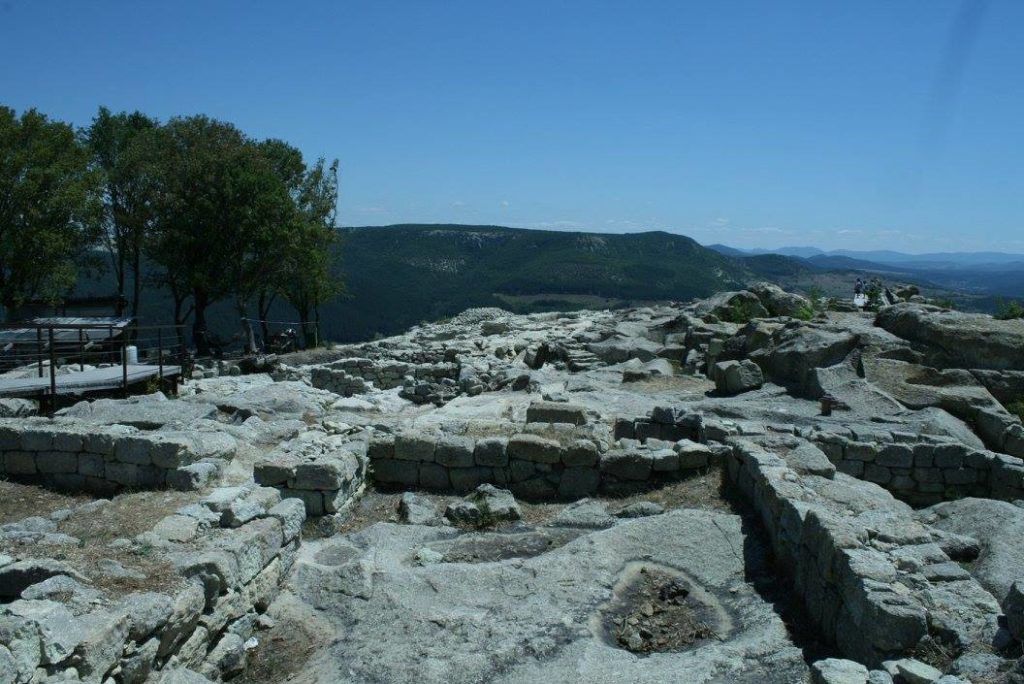
The ruins of Perperikon are what many now believe to be the Temple of Dionysus, perched high on a hill top in the Eastern Rhodope mountain range, around 15 kilometres or so from the town of Kardzhali.
The entrance to the ruins is ‘The ‘Temple Road’, a passageway carved out of the rock. It climbs steeply up towards one of the main entrances to the temple some 200 feet or so higher up.
Huge steps have been carved out of the rock with walls of stone rising over 20 feet on each side of you. The passageway ends at the fortress wall surrounding most of the temple on the top of the hill.
You are then free to scramble around the remains of the temple and the palace, exploring the many rooms and chambers that once formed one of the most important places of worship and rule in the area.
Without a guide or leaflet, there is little by way of explanation as to what much of the ruins originally were.
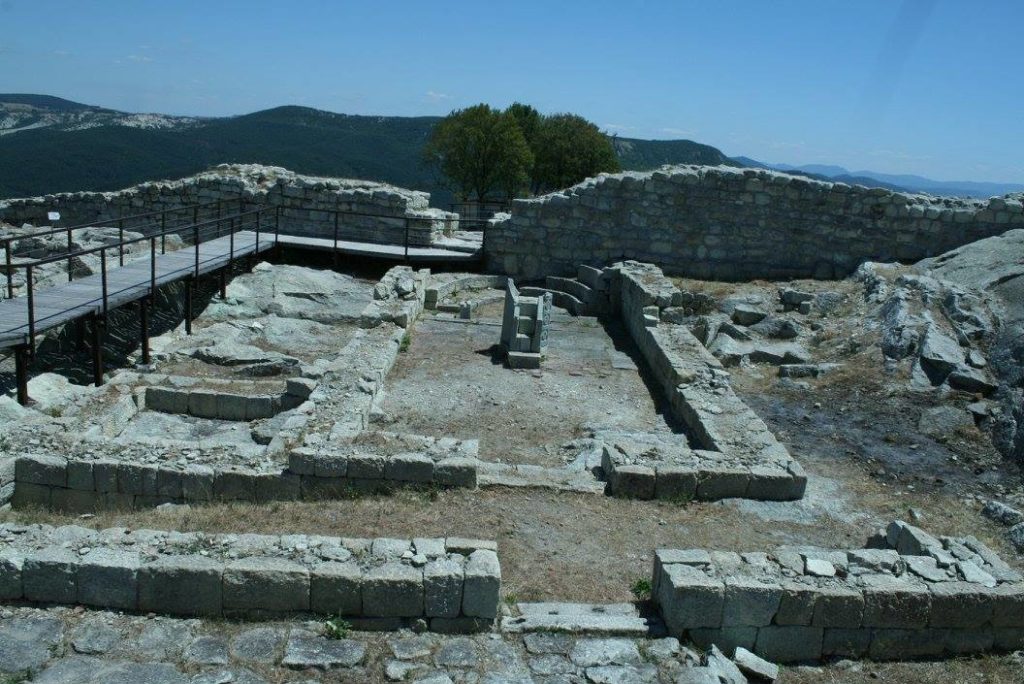
The earliest archaeological finds at Perperikon were pieces of pottery, dating back to Neolithic times in around 6th-5th millennium BC.
However, it is thought that at this early stage, there was no real settlement here and it was not until later on in the Bronze age that it became a definite place of worship, when various religions began to establish themselves.
Perperikon has been used by many different civilisations over the ages but as archaeologists have excavated the area they have discovered that the ruins are incredibly similar to those described by the ancient Greek authors as the Temple of Dionysus in Mount Rhodope.
Dionysus was the chief God of the ancient Thrace people although little is really known of the cult.
The palace or temple, just below the summit of the hill, houses many chambers, the most impressive being a huge hall which has literally been dug out of the rock and holds a number of stone sarcophaguses and you can also make out a giant alter and a stone throne.
It is thought that the temple was in fact several stories high as you can still clearly see the holes in the rock where roof joists and beams would have been slotted in.
As you wander around, you can make out a crude drainage system, where channels have been etched into the rock. One hypothesis is that the large stone alter was used for sacrificial purposes and the channels were to drain the blood away from the alter and down over the edge of the hill.
From ancient scribes, it is known that the Thracian cult did sacrifice horses, bulls and possibly even humans.
However, the other theory is that these channels were actually used to deliver sacred wine around the temple and archaeologists believe they have found several ancient wine presses in the bushes and undergrowth around the main temple site.
Above the great hall and the temple structure, sits the Acropolis, a fortress like structure surrounded by carefully laid stone walls.
As the Roman Empire spread, it appears that Perperikon became an important and strategic Roman fort and the structure was renovated by the Romans for their own use.
This included a sewage system to drain away waste and surface water and also there are two huge pits literally dug out of the rock floor and going down many feet.
It is thought these were used as reservoirs to collect rain water. The sheer scale of the amount of rock that has been removed to form these and the rest of the ground floor structure is truly mind boggling. Now these water pits are teeming with toads and insects.
Perperikon was likely to have been burned down as the Roman empire collapsed. However, it was later revived and a Christian church built over part of the Acropolis. Then only a century or two afterwards, Perperikon was abandoned once again.
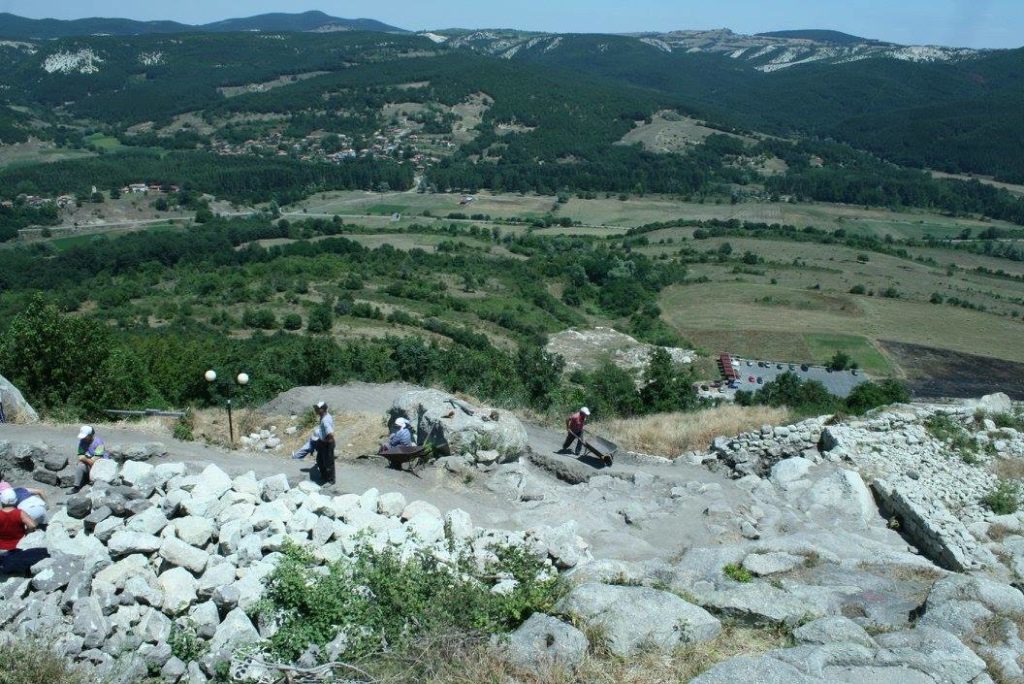
Excavations are ongoing and while we were there, numerous people were digging, carting barrow loads of earth away, sifting through the rocks and dirt.
And down the mountain side the path now extends and there is more being constantly discovered. Its thought that there are two towns on the slopes of the hill, yet to be explored and excavated.
And one the largest early Christian temples has recently been discovered from the 5th century AD on the southern side of the ruins and is a similar size to the Sofia Basilica. Thirty four graves were discovered around the Basilica ruins, one likely to belong to a senior monk.
Even though the site is now a bit more developed, there is little in the way of safety ropes to stop you slipping over the edge of the cliff side and there are no real explanations posted around the site, except for the odd wooden sign post.
The site is definitely not accessible for those who cannot cope with a fairly strenuous hike or who are not particularly sure footed. But it is definitely one of those places to keep going back to and seeing what else has ben discovered. So maybe in a few years time we’ll visit again!
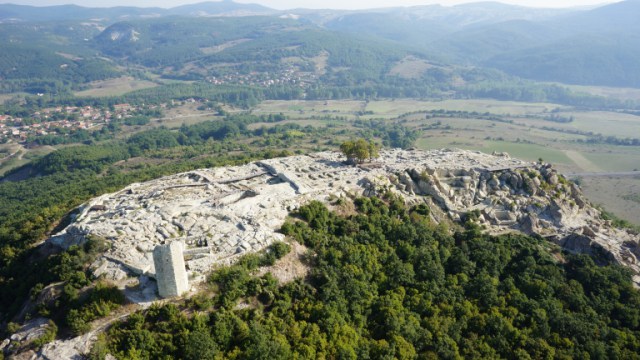
partly preserved fortress tower visible on the left
[Credit: Nikolay Ovcharov]

